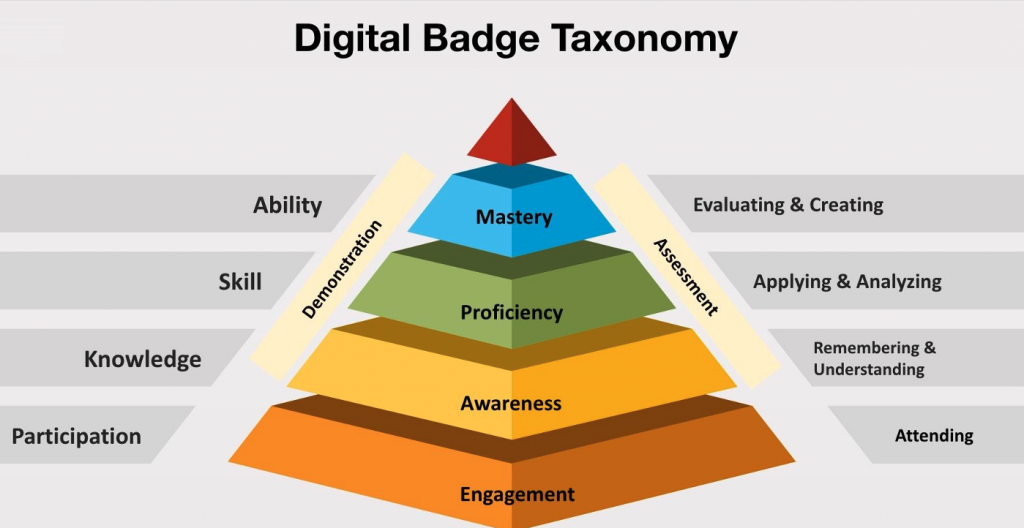Published on
Back to Basics: Defining a Digital Badge Taxonomy Using Cognitive Learning and Competency Frameworks

Adopters of digital badges often struggle to create categories enabling their classification in a consistent, meaningful way. The wide variety of credentials represented by badges ranges from basic participation (e.g., attendance at a conference or workshop) to conferred degrees and certifications. Recognition that digital badges are a secure container by which credentials can be represented, transmitted and shared easily when implemented using the Open Badges specification (IMS Global, 2022) has grown exponentially over the past decade. However, we have yet to create a taxonomy general enough to represent all levels and types of credentials possible in digital badging, nor has a taxonomy been grounded in a cognitive learning framework. The digital badge taxonomy below achieves this by applying Gottipati and Shankararaman’s (2018) competency cube, which maps Bloom’s modified taxonomy to Dreyfus’s skill development model.

The taxonomy pyramid grounds badge representation of competencies in a well-known framework in the academic landscape: Bloom’s taxonomy. Bloom’s modified taxonomy expresses the six levels of cognitive learning in a way that enables the definition of learner-centered, measurable learning outcomes with increasing levels of competency as you ascend the pyramid. Three of the skill stages—Awareness, Proficiency and Mastery—originated in Dreyfus’s skill development model. Gottipati and
Shankararaman’s work (2018) mapped Bloom’s cognitive taxonomy to this skill framework, providing a connection between language used inside and outside academia. The taxonomy presented here further connects these skill stages to terms used by employers to describe employee levels of knowledge, skill and ability or KSAs. The pyramid also highlights the levels that require assessment and demonstration of skills and competencies.
It should be noted that the lower level of the taxonomy pyramid adds categories to both Dreyfus’s skill stages and Bloom’s modified taxonomy in order to represent badges issued without any assessment or demonstration of skill; this category is defined as the engagement level, where a learner merely attends or participates in an activity and receives recognition for that engagement with a digital badge.
So, whether a digital badge is used as a container to represent successful completion of a degree program or as a module in a course with a single competency, this taxonomy supports both the classification and description of that achievement in a common language with consistent meaning both inside and outside academia—and anywhere else along the lifelong learning continuum where badges are earned and awarded.
References:
Gottipati, S., and Shankararaman, V. (2018). Competency analytics tool: Analyzing curriculum using course competencies. Education and Information Technologies. 23, (1), 41-60. Research Collection School Of Information Systems. Retrieved April 12, 2022, from https://ink.library.smu.edu.sg/sis_research/3726
IMS Global Learning Consortium (2022). Digital credentials and lifelong learning. IMS Global Learning Consortium, Inc. Retrieved, March 29, 2022, from http://www.imsglobal.org/initiative/digitalcredentials
Author Perspective: Administrator



